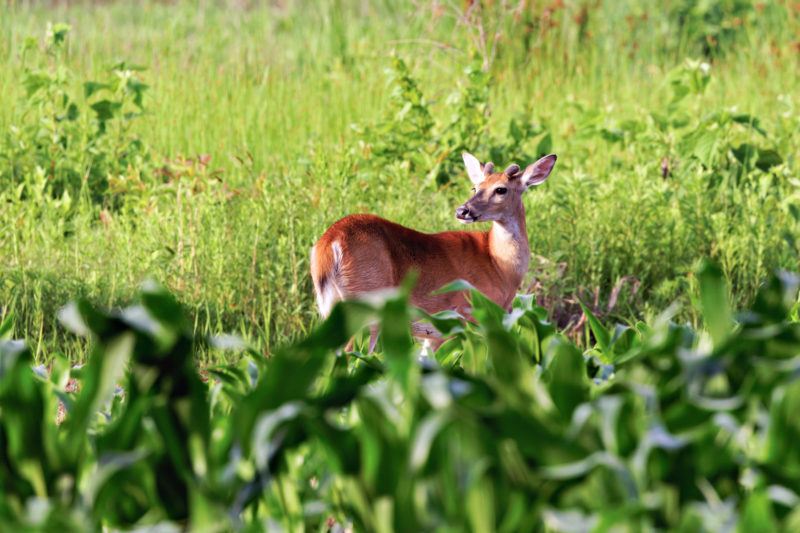On a visit to the lush bottomlands of Sequoyah National Wildlife Refuge in eastern Oklahoma last month, I had the pleasure of photographing a whitetail buck in the early stages of his annual antler regrowth. The velvet-covered antlers were already showing good length and mass, a sign of a healthy, mature buck benefiting from Sequoyah’s abundant natural Browse.

For those not familiar, whitetail bucks shed their antlers each year in late winter or early spring and immediately begin growing a new set. Triggered by lengthening daylight and surging testosterone levels, antlers can grow remarkably fast – as much as half an inch per day during peak development!
The new antler growth is covered in a fuzzy skin called velvet, which is crisscrossed with blood vessels and nerves that supply oxygen and nutrients to the growing bone. By late summer, as the antlers near full size, the velvet will dry up and fall off, revealing the impressively sculpted and hardened rack.
Several factors influence the size and shape of a buck’s antlers, including age, genetics, and perhaps most importantly, nutrition. Bucks need ample protein to maximize antler growth, and Sequoyah’s fertile river bottom habitat provides a smorgasbord of natural foods, from tender green shoots in spring to acorns and pecans in the fall. The refuge’s adjacent agricultural fields also give deer access to protein-rich crops.
It’s amazing to witness the transformation of these magnificent animals from the skinny, worn-down creatures they are in late winter to the regal, heavily-antlered bucks of autumn. Sequoyah National Wildlife Refuge provides a fantastic front row seat to watch this cycle of nature play out each year. I can’t wait to return in a couple months and see this buck’s rack in its full hardened glory as he prepares for the fall breeding season.
